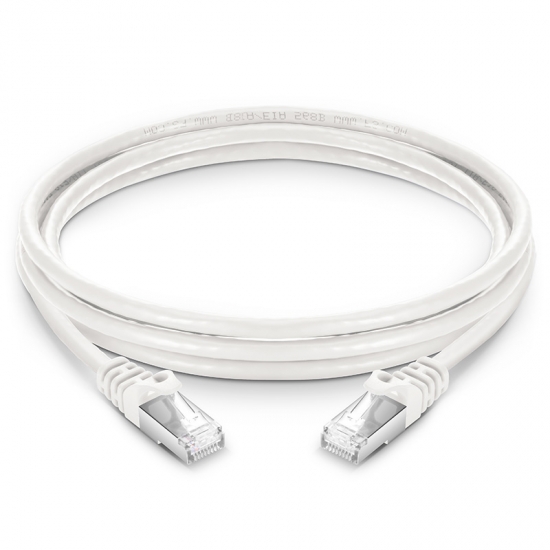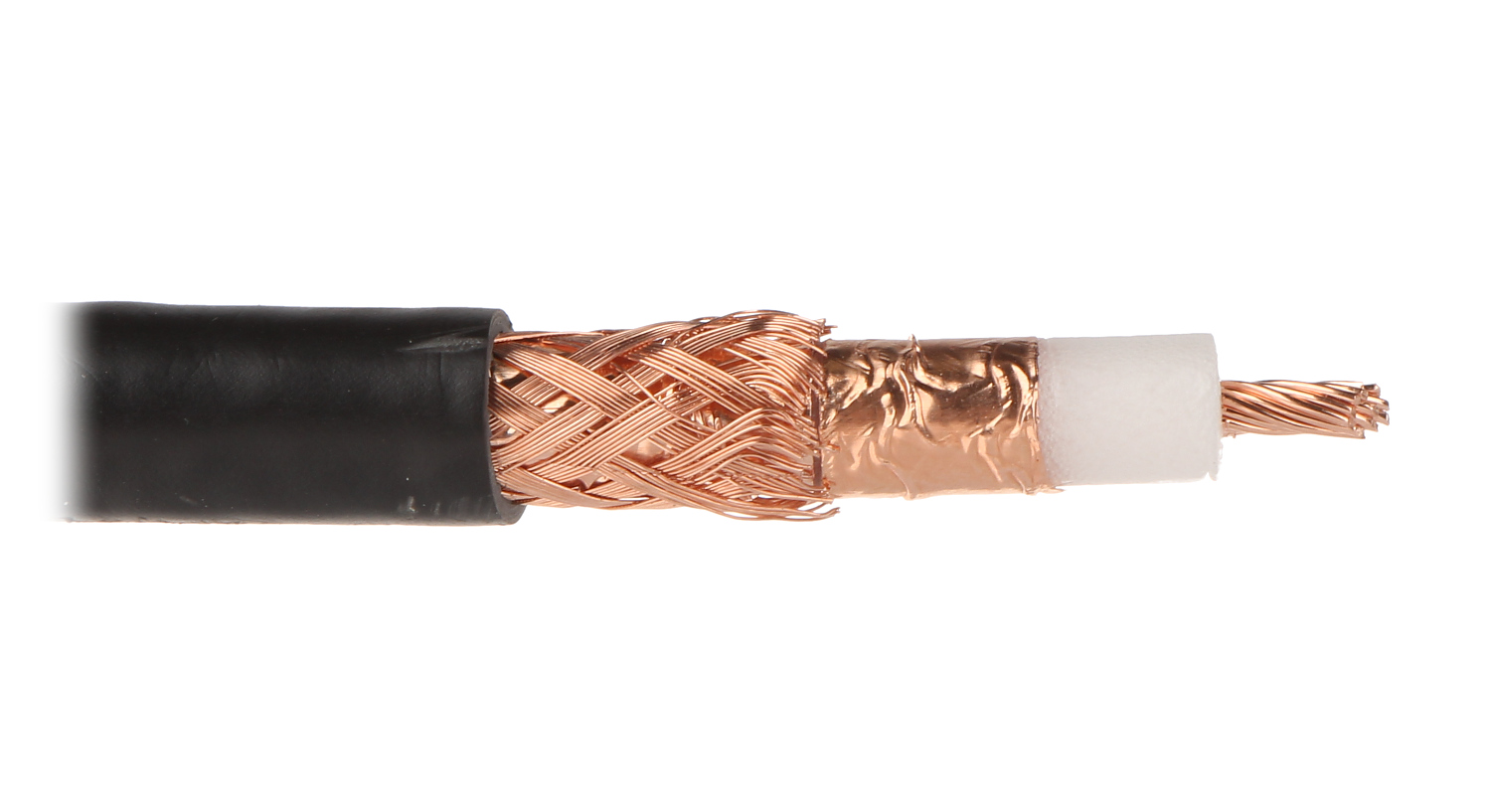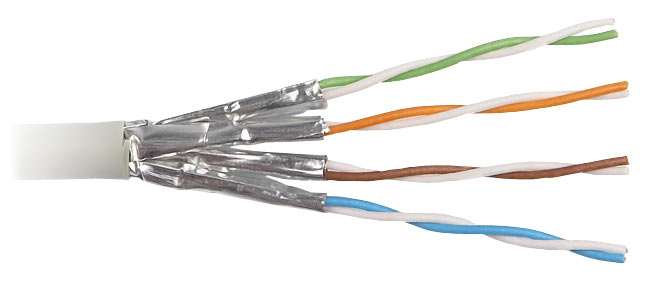Copper cabling is the primary medium employed in Ethernet networks. Its main role is to carry electrical signals that represent data.
You’ve likely seen this type of cable. It may be in your company’s network or at home, connected to your router.

Figure 1 – Copper Ethernet Cable with RJ45 Connectors
Copper cable is popular. It's cheap, easy to install, and flexible for LAN environments. It also supports Power over Ethernet (PoE). This feature lets devices like IP phones, wireless access points, and security cameras receive both data and power through one cable.
Answer the question below
Several types of copper cables exist, but for the CCNA exam, you only need to focus on the most common ones. First, let's see the coaxial cable.
Coaxial Cable
In early Ethernet networks, coaxial cable was widely used. It has a central copper conductor. This is surrounded by insulation, shielding, and an outer jacket.

Figure 2 – Coaxial cable
Coaxial offered solid interference protection, but it was bulky and slow. It has now been replaced by twisted-pair cabling in modern LANs.
Unshielded Twisted Pair (UTP)
UTP is the most common type of copper cabling in Ethernet. It contains 4 pairs of wires (8 wires total), with each pair twisted. You may ask yourself: why are the wires twisted?
This is because of a phenomenon called crosstalk, where signals from one pair of wires interfere with another pair. This interference damages the quality of the signal. To solve this issue, the wires are twisted together. This reduces interference and makes the signal more reliable.
.jpg)
Figure 3 – UTP cable
The UTP cable is cheap, flexible, and easy to install, which makes it the default choice for LANs in homes, offices, and classrooms. The drawback is that it lacks shielding. As a result, it can be affected by two types of interference: electromagnetic interference (EMI) and radio frequency interference (RFI).
Shielded Twisted Pair (STP)
STP uses the same twisted-pair design as UTP but adds extra shielding (foil or braided) around the pairs. This shielding reduces crosstalk between the wires and also protects the cable from external interference.
These external interferences can be very disruptive in certain environments.
Electromagnetic interference (EMI): noise created by electrical devices, such as motors, fluorescent lights, or power cables.
Radio frequency interference (RFI): signals from wireless devices, radio transmitters, or other sources that leak into the cable.

Figure 4 – STP cable
Adding shielding, as shown above, helps STP reduce interference. This keeps data transmission reliable.
The trade-off is that STP is more expensive, less flexible, and harder to install than UTP. It is mainly used in industrial or high-interference environments where protection is critical.
Answer the question below
What is the most common Ethernet cable type used in LANs?
Copper cables are classified into categories (Cat). Each category defines the greatest supported speed and distance.
For the CCNA exam, you mainly need to know Cat5e, Cat6, and Cat6a. These are the most common in today’s networks.
Cable Category
Speed
Distance
Standard
Typical Use
Cat3
10 Mbps
100 m
10BASE-T
Legacy Ethernet LANs
Cat5
100 Mbps
100 m
100BASE-TX
Fast Ethernet (obsolete)
Cat5e
1 Gbps
100 m
1000BASE-T
Standard in most LANs
Cat6
1 Gbps
100 m
1000BASE-T
Modern LANs
Cat6 (enhanced)
10 Gbps
55 m
10GBASE-T
Short-distance 10G links
Cat6a
10 Gbps
100 m
10GBASE-T
Enterprise/datacenter networks
Table 1 – Copper cable categories with Ethernet standards
40 % Complete: you’re making great progress
Unlock the rest of this lesson
If you’d like to continue your CCNA journey, simply create your free account.
Access all CCNA lessons
Practice with hands-on labs
Train with Practice exams and Quizzes
Progress tracking in your dashboard
Made by network engineers - CCNP certified
learners globally
Copper Cabling
Copper cabling is still the most common medium in LANs because it is cheap, simple to install, and flexible.
In this lesson, you’ll learn its main types, categories, connectors, and limits for the CCNA exam.